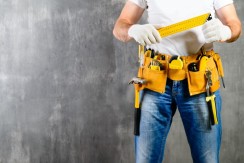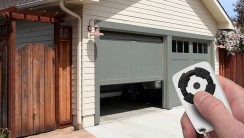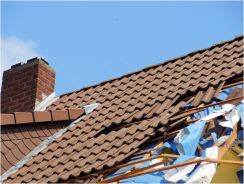5 Things You Need to Know About Well Maintenance
Are you considering buying a home that has a well for water? Do you already have well water? Lots of people do – in fact, 42 million American households rely on a well for their water supply, and they don’t all live in the middle of nowhere. Many people prefer well water over municipally supplied water, because they think it tastes better, or they simply prefer having control over their own water supply.
However, to keep your well in good shape, you need to know how to take care of it. Your access to clean drinking water, the health and safety of your family, and your home’s plumbing all depend on good well maintenance. Whether you’ve been drinking well water for years, or you’ve just started using it for the first time, you need to maintain your well equipment, have your water tested regularly, and be vigilant against contaminants that could make your well water unusable. Here’s what you need to know about keeping your well and its water safe and healthy.

1) Well Pumps Require Regular Maintenance
Today’s wells no longer rely on the old-school bucket-and-crank method of water extraction. Most well owners have electric well pumps to extract water into an indoor storage or expansion tank. Surface pumps are relatively easy to service, but submersible pumps, which are lowered down into the well, are harder to get to and can cost thousands to repair and replace.
Fortunately, submersible well pumps are designed to last for up to 25 years, but you need regular pump and well service to help you get there. Usually, this means getting a yearly well inspection and service. Well service should include a flow test, a water level check both before and during pumping, a pump motor performance check, inspection of the pressure tank and switch, and a general inspection of the water. The pump and related equipment should be inspected for sanitation and to make sure it’s up to code. Common repairs to well pumps include replacing the expansion tank, which can cost between $250 and $500 plus labor, or replacing the pressure switch, which costs $20 to $40 plus labor.
2) Well Water Should Be Tested Yearly
Since wells draw from ground water, contamination could become an issue. Lots of things could contaminate your well water, including disease-causing microorganisms like coliform bacteria. Other possible contaminants include agricultural runoff, waste water, and plant debris. Even normal sediment can build up in a well, especially if it hasn’t been used in a while, and while that’s not exactly dangerous, it can damage the well pump. Yearly testing of your well water ensures that it’s safe to drink.
Well water testing is usually done as part of a well maintenance checkup. Water testing is performed after the well pump and other equipment is inspected and tested. At the end of your maintenance checkup and water testing, you should receive a written report explaining results and recommendations.

3) Leave Testing and Maintenance to the Professionals
While it might be tempting to save a few hundred bucks and fix your own damaged well pump, the last thing you need is to drop some tools down in the well or get the well pump stuck somehow trying to get it out. Plenty of well-meaning homeowners accidentally foul their wells trying to maintain them. You could even accidentally electrocute yourself trying to service your own well pump.
That’s why it’s best to leave well maintenance and testing to the professionals. Every time you open up a well, you introduce the possibility of contaminating it. Well maintenance professionals are trained and licensed to service wells and test well water without contaminating it. Make sure you do your research and choose a reputable, licensed contractor.
4) Chlorine Alone Won’t Clean Your Well Water
Many well owners think that they can clean a fouled or contaminated well by adding chlorine to the water, but that’s a common misconception. Chlorine will only disinfect water once debris and solid material has been removed from it. If your well has been contaminated by debris, you need a licensed professional to remove it and treat the water to disinfect it. Dumping household bleach into your well will not disinfect it, and it’ll make your water taste and smell like bleach.
5) Keep Well Maintenance in Mind When You’re Working Outside
If you’re buying a home with a well, or even one that probably used to have a well, you should do an inventory of the property to find and properly cap any abandoned wells. An improperly capped, abandoned well is dangerous – someone could fall into it and be seriously injured or killed. Furthermore, each improperly capped well on your property is a vector through which contaminants can enter the ground water. Don’t try to cap an old well yourself; get a professional to install a sanitary well cap.
When you’re working outside, keep the health of your well water in mind. Don’t dump paint, motor oil, gasoline, or other potential contaminants out on the ground where they could find their way into your well water. Make sure that septic and wastewater systems drain safely away from your well water.
A clean, sweet well is one of life’s many simple pleasures. Take good care of your well, and it’ll provide you and your family with delicious, pure water for as long as you choose to live in your home.











Author
Homesgofast com
Homesgofast.com is an international real estate portal and news source for Google news. Publishing international real estate, finance, homes and travel-related news and blogs for a targeted audience since 2002. Each news item is circulated to thousands of potential readers each day and is also available to the millions of people who sign up for Google news alerts. Find homes offered for sale and to rent direct from owners and some of the best real estate agents from over 35 countries